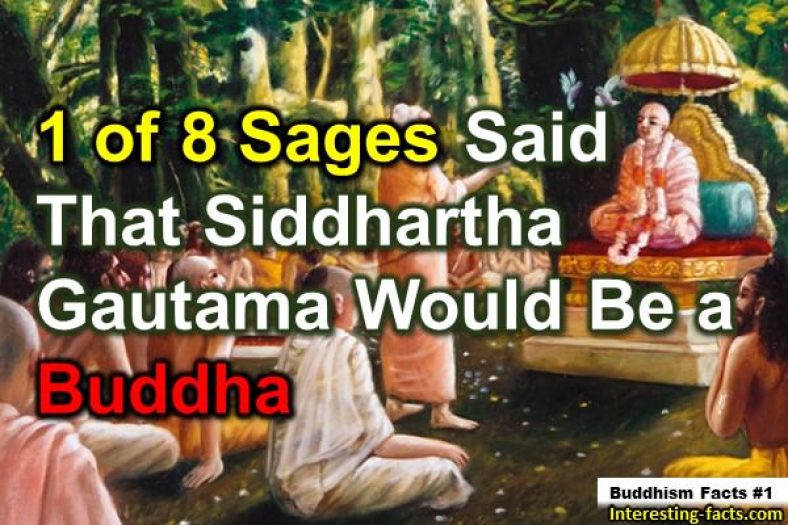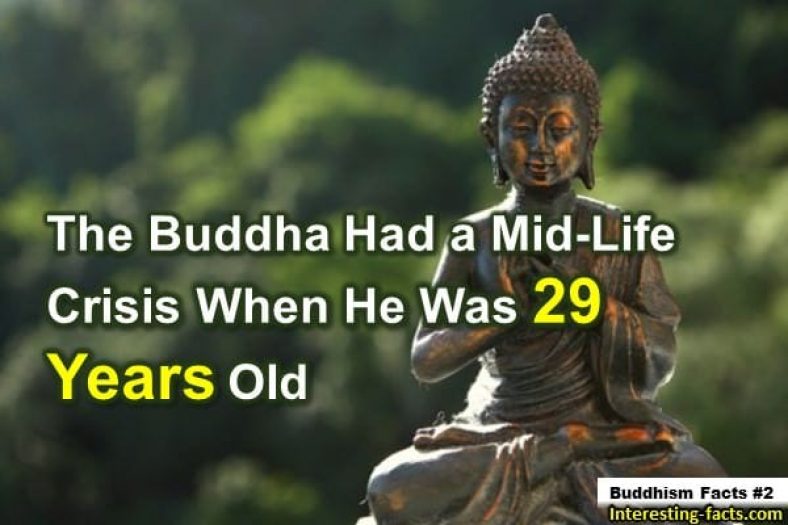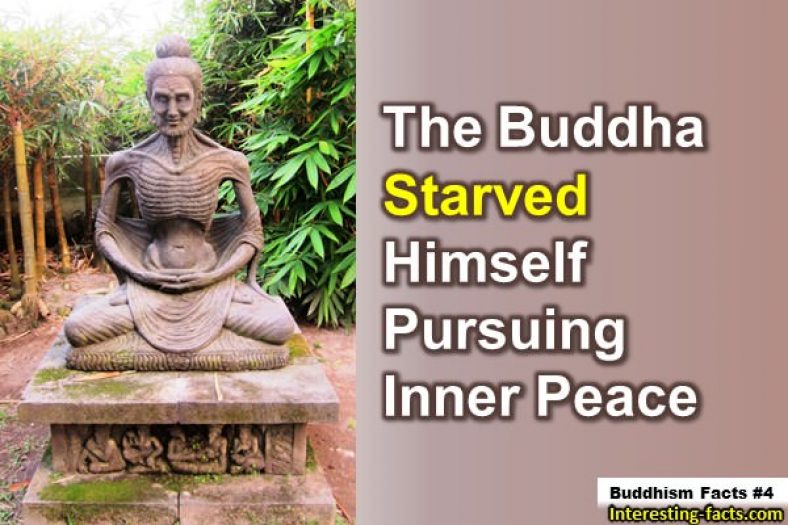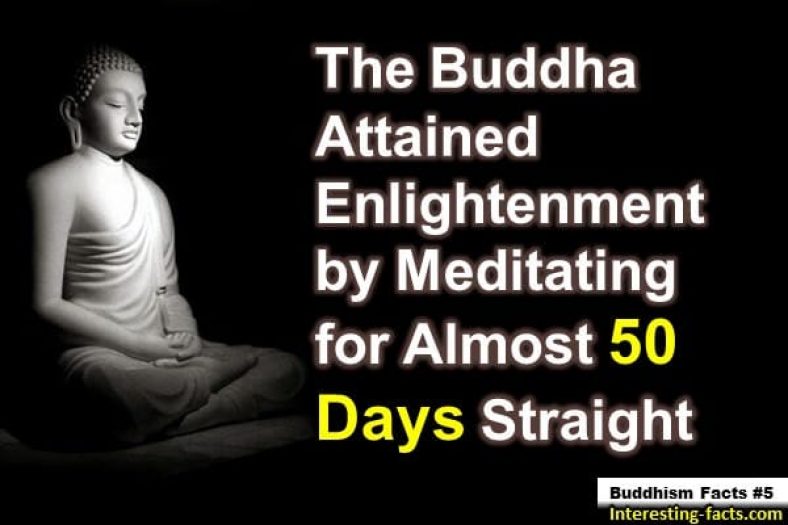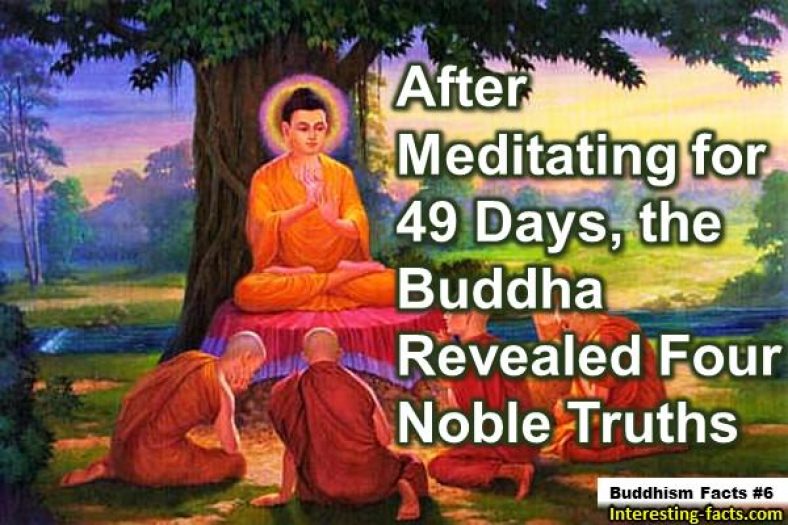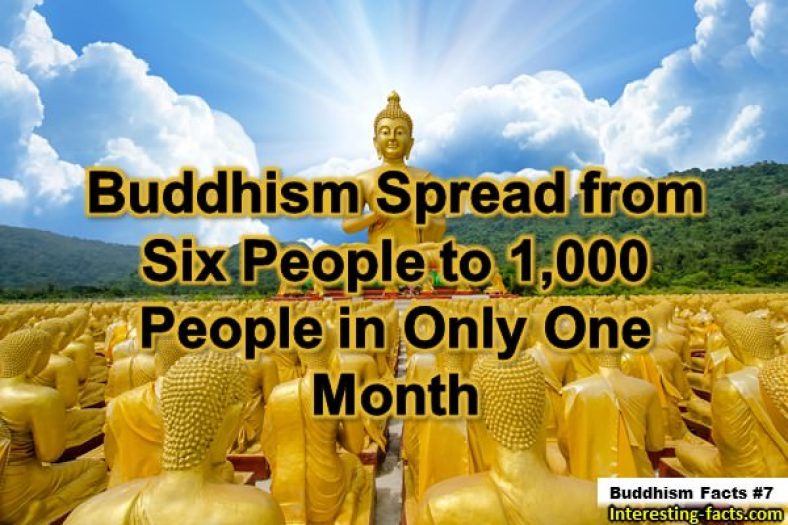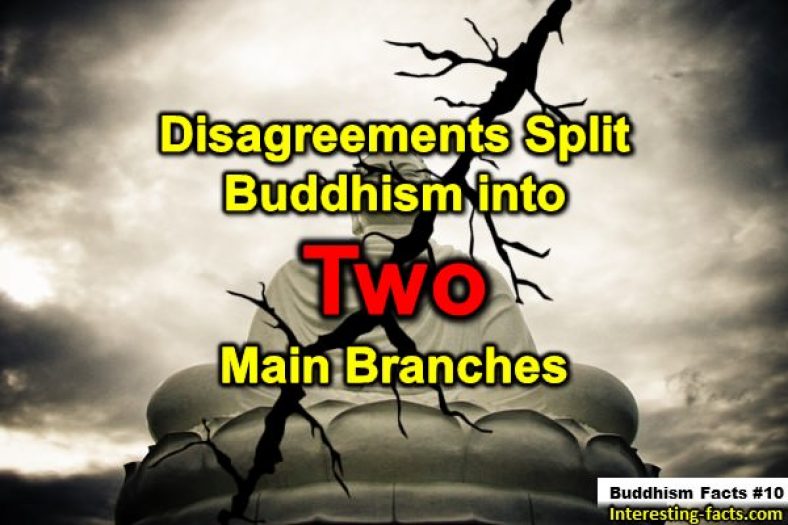Buddhism Facts – 10 Facts about Buddhism
1 of 8 Sages Said That Siddhartha Gautama Would Be a Buddha
The story of Gautama’s life is important when it comes to learning about Buddhism. Many interesting facts about Buddhism can be revealed by a brief study of the Buddha’s life. For some Buddhists, the way in which Gautama led his life is one of his greatest teachings.
Some of the hardest Buddhism facts to establish are those regarding the Buddha’s life. His teachings were first passed along through oral tradition before being written down many years, perhaps even centuries, later. Gautama was born in eastern India, sometime between the 6th and 4th centuries BCE.
Because the Buddha’s teachings led to the creation of Buddhism, there have been many biographies written about him. These biographies tend to be fantastic, as Gautama tended to be elevated and deified by some later Buddhists.
While many facts are disputed, most accounts agree that Gautama was born into a higher-class family. His father was a chieftain, or an oligarch. Legend has it that his mother died in childbirth and that his father summoned eight sages of the Vedic tradition to forecast Gautama’s future. Seven of the eight sages said that Siddhartha would be a great king or a great holy man. The eighth predicted that he would become a Buddha.
back to menu ↑The Buddha Had a Mid-Life Crisis When He Was 29 Years Old
While many of the stories of the Buddha’s life are difficult to confirm, they provide us with important Buddhism facts because they tell us about the time in which the Buddha lived, and the religious environment that led to the start of Buddhism.
According to tradition, Siddhartha was given all the comforts of a prince. His father may not have been a king, but he provided everything his son could possibly want. As legend goes, Siddhartha had limited knowledge of spiritual teachings because his father wanted him to be a great king, rather than a great holy man.
It is also said that Siddhartha lived a sheltered life and did not know much suffering. He was married through an arranged marriage at the age of 16 years old. Siddhartha became a father, and continued to live a life of luxury.
When he was 29 years old, as the story goes, the Buddha left his home for the first time to see the world outside his palatial surroundings. During his first visit away from his home, Siddhartha saw an old man. When he asked the driver of his chariot what was wrong with the man, the driver explained that all people get old.
This intrigued the sheltered Siddhartha, who had seen little of the world. He went on more trips outside of his home and is reported to have seen a diseased man, a decaying corpse, and an ascetic.
For the first time in his life, Siddhartha witnessed suffering. Perhaps it was the shock of seeing all these things that influenced Siddhartha to do what he did next. Siddhartha left his life of luxury, and his family, to pursue the life of an ascetic. After seeing suffering, death, and disease, Siddhartha felt the only way to avoid these was by practicing asceticism.
back to menu ↑The Buddha Was a Religious Innovator like Jesus of Nazareth
At the time Gautama left his life of luxury, the Vedic religion, which would eventually become part of Hinduism, was practiced along with other religious rites in India. The Vedas, from which the Vedic religion got its name, are a collection of ancient Indian religious texts. The concepts and vocabulary used in these spiritual texts would become part of the Buddhism facts we know today.
Gautama pursued his spiritual quest in this religious environment. He was learning the Vedic tradition, along with other ancient Indian spiritual traditions. Later, when he would explain his insights, he would use words and concepts from these traditions. This made it easier for Gautama to explain and relate his message to his audiences, including his early disciples.
In some ways, Buddhism is an extension of ancient Indian spiritual practice, with new insights provided by Gautama. This is very similar to Christianity, which many see as an extension of the older Jewish religion, with new insights provided by Jesus of Nazareth.
back to menu ↑The Buddha Starved Himself Pursuing Inner Peace
Siddhartha pursued the life of an ascetic. He left his home and began begging on the street. One of the surprising Buddhism facts is that Gautama learned yogafrom two different teachers. According to legend, he was not satisfied with the level of training he received from his first teacher and, despite reaching higher planes of meditation with his second teacher, he still sought a greater awakening.
Siddhartha was not happy with the current spiritual practices in India. His yoga teachers could not provide him the escape from suffering that he sought. Siddhartha continued on his spiritual quest and, as legend has it, he had five friends with him. They all took their asceticism further, depriving themselves of food and worldly positions.
One day, while he was bathing in a river, Siddhartha collapsed and almost died. He collapsed from lack of nutrition. He recognized that extreme poverty was not going to bring him any closer to enlightenment.
back to menu ↑The Buddha Attained Enlightenment by Meditating for Almost 50 Days Straight
After he collapsed in a river from starvation, legend tells us that Siddhartha sat under a tree in an area known as Uruwela. This is perhaps the most important of all Buddhism facts: the 35-year old Siddhartha meditated under the tree, and refused to leave until he had achieved enlightenment.
He knew from his early life that extreme luxury would not bring an end to suffering. He knew from his travels that extreme poverty would not bring an end to suffering. After nearly 50 days meditating under the tree, Siddhartha reached the destination he had sought in his spiritual journey — enlightenment.
Meditating under the tree, Siddhartha discovered that the Middle Way was the path to enlightenment. This is one of the core Buddhism facts about the doctrine of Buddhism. The core principles of Buddhism that the Buddha first proscribed include avoiding any extremes, and searching for the middle path that provides clarity and true detachment.
When Siddhartha achieved enlightenment, he became known as the Buddha. The tree he meditated under became known as the Bodhi Tree, and the surrounding area became known as Bodh Gaya. This location appears to be more certain than the disputed Buddhism facts about where exactly the Buddha’s birthplace was. For modern Buddhists, Bodh Gaya is the most important place of pilgrimage.
back to menu ↑After Meditating for 49 Days, the Buddha Revealed Four Noble Truths
After his awakening under the Bodhi tree, the Buddha began to preach the insights he had achieved. The Buddha discovered the end of worldly suffering through meditation. He described the end of suffering through another one of the important Buddhism facts: the Four Noble Truths. These Noble Truths would become the core of the Buddha’s teaching. The Buddha’s teaching would become known as the Dharma.
The first Noble Truth is that suffering exists as part of life; in birth, aging, disease and death. This suffering is a type of attachment to worldly life, which is called dukkha. The next three Noble Truths teach us about dukkha, and how to find release from the attachment to suffering.
The second Noble Truth teaches us how dukkha comes to be in our lives. Through sensory cravings, we become more attached to worldly suffering. These cravings even include the craving to have a sense of self that is continuous throughout one’s life. And, as the Buddha learned to avoid extremes, the craving to not exist and to be separated from dukkha is another craving that actually brings more attachment to dukkha.
The third Noble Truth is that we can escape from dukkha, and experience a state of non-attachment to worldly suffering. The suffering still exists, and we acknowledge that, but we have risen above it by following the Middle Way.
The fourth Noble Truth is the path that leads to the cessation of attachment to worldly suffering. Through the wisdom of meditation on dukkha, and by following the Middle Way, we can take this path away from suffering.
The fourth Noble Truth would be expanded to describe the Noble Eightfold Path. This path includes: right sight, right intention, right speech, right action, right livelihood, right effort, right mindfulness, and right concentration. These parts of the Noble Eightfold Path are not completed in sequence. They are all practiced on the road to enlightenment.
These teachings would form the Dharma. This collection of the Buddha’s teachings is one of the Buddhism facts that is debated by the different sects of Buddhism in modern times. The core precepts of the Four Noble Truths are widely agreed upon, but interpretation of these truths is where disagreement occurs.
back to menu ↑Buddhism Spread from Six People to 1,000 People in Only One Month
Buddha first preached his insights to the five friends that had accompanied him on his path to enlightenment. These five friends, along with the Buddha, formed what is known as the Sangha. This is the community of Buddhist monks or, in a larger sense, the Buddhist community.
Within months, the Sangha would grow to over 1,000 people from the original six! This is one of the amazing facts about Buddhism: it spread quickly in the beginning. Although he was hesitant at first, the Buddha eventually allowed women to become Buddhist monks. This is reported to have occurred five years after the formation of the Sangha.
It’s one of the important Buddhism facts that the Buddha saw the path to enlightenment as being open to all. Every person, regardless of gender or background, has the ability to attain enlightenment by studying the Dharma.
back to menu ↑The Three Jewels of Buddhism Don’t Include Diamonds, Rubies or Emeralds
Within five years of his experience under the Bodhi tree, the religion that the Buddha taught was growing rapidly. The religion would become known as Buddhism, and followers as Buddhists.
Buddhists take refuge in the Three Jewels. These Three Jewels are the founder of the Buddhism — the Buddha, and his teachings — the Dharma, and the community of Buddhists — the Sangha.
back to menu ↑Indian Emperor Ashoka Converted and Spread Buddhism after 100,000 People Died
In another one of the Buddhism facts that calls to mind Christianity facts, it would be an emperor and not a priest who would spread Buddhism across the Indian continent, into China, and other parts of Asia.
Ashoka Maurya was an emperor who would be the first to rule almost the entire Indian subcontinent. Ashoka converted to Buddhism after waging a bloody war that resulted in over 100,000 people dying. This is one of the Buddhism facts that is difficult to prove. It’s clear, however, there was a large-scale war at the time, and that Ashoka converted to Buddhism after the war.
After converting to Buddhism in around 260 BCE, Ashoka made it the state religion of the empire. This is very similar to when Caesar Augustus converted to Christianity and spread the religion throughout the Roman Empire.
Ashoka’s conversion to Buddhism was vital in helping establish Buddhism facts. During this time, Ashoka built shrines at important locations in the Buddha’s life. Had these locations not been identified at the time, it would be even more difficult for us to establish facts about Buddhism today. For instance, we know the location of Bodh Gaya, because Ashoka built a large temple there.
back to menu ↑Disagreements Split Buddhism into Two Main Branches
The early teachings of the Buddha that formed the Dharma were not written down. They were transmitted by word of mouth from the Buddha to his disciples and then to new members of the Sangha. As the religion spread and became more established by Ashoka, the Dharma began to be recorded in written record, forming a canon of texts that are studied by Buddhists today.
During the course of transmission from oral teachings to written doctrine, some disagreements occurred over interpretations of the Buddha’s teachings. These disagreements continued, and escalated, after the Buddha’s passing.
As a result of these disagreements over interpretation, two main branches of Buddhism emerged: Theravada Buddhism and Mahayana Buddhism.
In the Theravada tradition of Buddhism, the Buddha was an ordinary man, who attained enlightenment by discovering the Four Noble Truths. This possibility is open to any ardent spiritual practitioner. In Theravada Buddhism, people today can become Buddhas by following the path to enlightenment.
For Mahayana Buddhists, the Buddha is much more than an ordinary man. He is the projection of an unchanging, omnipresent being. The Buddha has the status of a god, and he is above lesser gods of the ancient Indian tradition.
As Buddhism spread throughout Asia, more Buddhism facts were established. Wherever Buddhism flourished, it absorbed parts of the local culture as the roots for its growth. As a result, the different sects that developed within Theravada and Mahayana Buddhism reflect the various cultures in different parts of Asia.
Some of these sects even include local gods and deities as part of their practice. Buddhism allows for a wide range of interpretations, and the doctrines that develop in each sect often reflect existing religious practices in that area.
Facts about Buddhism Summary
Facts about Buddhism can give us a peaceful feeling. Many Buddhism facts teach us about Siddhartha Gautama. Gautama’s teachings became the foundation of the religion that would become Buddhism, and Gautama is known as the Buddha.
Buddha translates roughly as the enlightened one, and Buddhists, or followers of Buddhism, see the Buddha as a wise teacher who taught lessons about escaping suffering and achieving Nirvana. Nirvana is the quieting of the mind after desire, illusion and ignorance have been extinguished.
This flexibility in interpretation, and a willingness to absorb local customs, has made Buddhism one of the fastest growing religions to ever exist on Earth. A message of escaping from worldly suffering was spread throughout the world from the teachings of one man. Despite the difficulty in establishing early Buddhism facts, it’s clear that the historical Buddha did in fact exist, and preached the core principles that would become Buddhism.
Eventually, Hinduism emerged in India as the predominant religion, despite the efforts of Ashoka to make Buddhism the main religion of the country. In other parts of Asia, however, particularly Southeast Asia, Buddhism is the main religion. Each day, nearly half a billion people worldwide follow the Four Noble Truths, which were discovered by Siddhartha Gautama while meditating under a tree over 2,000 years ago!

